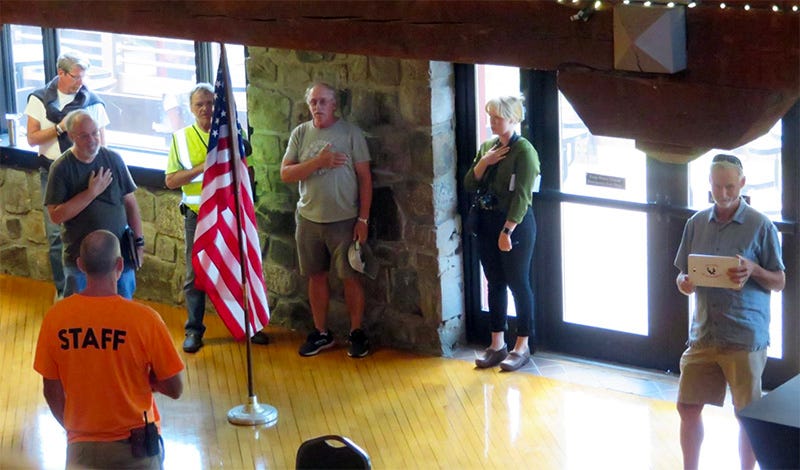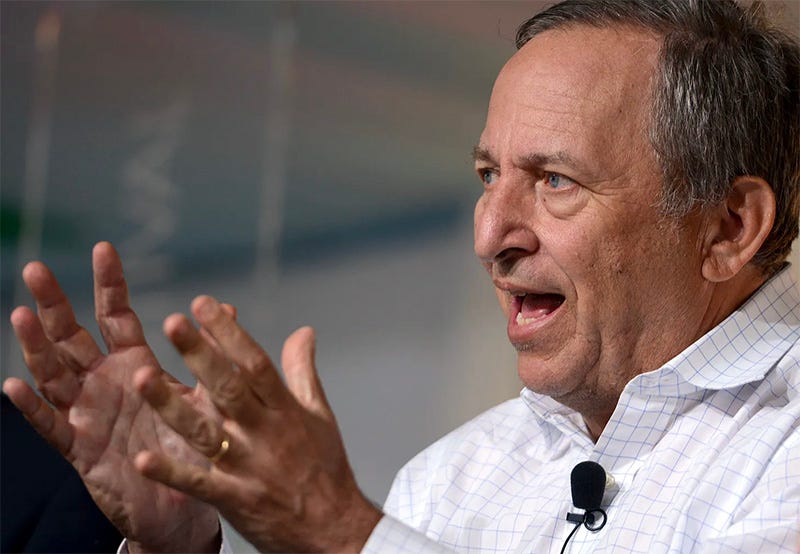Welcoming Iconoclasm
From Flag Salutes To CDC, Don't Go Along With The Crowd
“It’s very dangerous for universities to become epistemically closed communities dedicated to social comfort. I worry about that every day,” Larry Summers is quoted as saying in Common Sense.
Universities in the past were “hotbeds” of ideas, where diverse opinions shared the stage and students were encouraged to question everything. Today we are hearing more and more accounts of speakers being canceled for their views or professors losing their jobs over comments that lay outside “accepted speech”.
It is not just universities. Society in general has become less tolerant of nonconformists. That means that dissenting views are not tolerated and those who express them are maligned, as Summers was when he disagreed with other “experts” on what the huge economic stimulus package of 2021 would do to the economy.
Summers, who served as president of Harvard from 2001 to 2006, had served as chief economist at the World Bank, as treasury secretary under President Bill Clinton, and as director of the National Economic Council under President Barack Obama. Having helped trim President Joe Biden’s doomed Build Back Better initiative to the bipartisan Inflation Reduction Act, he believes inflation will be brought back under control — but he makes no promises.
Ronald Reagan had a very good phrase: “Trust, but verify.” I don’t think people should extend their unquestioning trust to any institution. People should watch carefully. They should listen to a wide range of voices and see what makes sense to them. We should be venerating rational and serious debate as a central value in our politics. I think that any institution needs to consider the extent to which it is trusted and how it can raise its trustworthiness.
For the Fed to issue a forecast every eight or sixteen weeks of what it thinks is going to happen to inflation and unemployment is to invite a loss of credibility. Inevitably, those forecasts are not going to be completely accurate.
Alan Greenspan and Paul Volcker understood what the Delphi Oracles understood, which is that if people think you're potent and infallible, but actually you’re human, it’s a good idea to keep your prophecies vague and oracular rather than to put your credibility at risk and shatter the illusion. I think the current generation of central bankers has gravitated to overly technocratic, mechanistic, and academic approaches that make the loss of credibility all but inevitable.
— Larry Summers during interview with Bari Weiss
The Centers for Disease Control made a similar mistake, according to Director Rochelle Walensky. She faulted the agency for acting too much like an academic institution that was focused on producing “data for publication” instead of “data for action,” according to the New York Times. As a result, its preparations for dealing with a pandemic fell short of expectations, harming the institution’s reputation. Its changing and contradictory advice caused many people to lose confidence in what had been considered an exemplary government agency.
It is important to listen to dissenting views. Summers said that, if he were president of Harvard today, “I would very visibly try to invite speakers from a range of areas who challenge our local orthodoxies and make clear that I want to hear what they have to say. Not because, in most cases, I agree with them, but because I would think and speak more clearly for having considered their arguments.”
Instead, today’s citizens adhere to orthodoxy, even if they do not understand it. Thus, there was an outcry when Belmont Representative Mike Sylvia did not salute the flag during a meeting of the Gunstock Area Commission this week.

First of all, Sylvia was recording the meeting with his tablet. Anyone who has covered meetings with camera or video equipment knows that one cannot operate the devices while stopping to salute the flag. One of those making an issue of Sylvia’s “refusal” to salute was Alan Posnack of Citizens For Belknap, who was so incensed that the took a photo. How could Posnack have taken that shot if he was saluting the flag?
That is not to say that Sylvia did not make a conscious decision to ignore the call to join in the salute. As a member of the Free State Project and one who has sponsored legislation to have New Hampshire secede from the United States, he likely did not want to pledge allegiance to the flag and the republic.
He is not alone. Many before him have questioned the notion of pledging to a symbol, and the United States Supreme Court has upheld the rights of citizens to decide whether to do so.
Pledging allegiance to the flag is one of those things that people do without understanding its background. The original pledge was written by Francis Bellamy, a socialist and ordained minister, to mark the 400th anniversary of Columbus’ discovery of the New World — an event that many people today lament for the genocide of indigenous people that followed. The pledge, published on September 8, 1892, was part of a marketing gimmick for the Youth’s Companion, which offered U.S. flags to readers who sold subscriptions to the magazine. According to The Smithsonian, “the magazine planned to raise the Stars and Stripes ‘over every Public School from the Atlantic to the Pacific’ and salute it with an oath.”
In a series of speeches and editorials, Bellamy had argued that Gilded Age capitalism, along with “every alien immigrant of inferior race”, had eroded traditional values. Pledging allegiance, he said, would ensure “that the distinctive principles of true Americanism will not perish as long as free, public education endures.”
The pledge was to be recited in public schools, accompanied by a military salute: “At a signal from the Principal the pupils, in ordered ranks, hands to the side, face the Flag. Another signal is given; every pupil gives the flag the military salute — right hand lifted, palm downward, to a line with the forehead and close to it. Standing thus, all repeat together, slowly, ‘I pledge allegiance to my Flag and the Republic for which it stands; one Nation indivisible, with Liberty and Justice for all.’ At the words, ‘to my Flag,’ the right hand is extended gracefully, palm upward, toward the Flag, and remains in this gesture till the end of the affirmation; whereupon all hands immediately drop to the side.”
Shortly after the pledge was instituted, it began with the right hand over the heart until after reciting”to the Flag” at which time the arm was extended toward the flag, palm-down. During World War II, that salute was considered too close to the Nazi salute, and the right hand was to remain over the heart throughout the pledge. In 1923, the words were changed to “the Flag of the United States of America” and, during the presidency of Dwight D. Eisenhower, “under God” was added.
While pledging allegiance was considered mandatory for students, over the objections of Jehovah’s Witnesses, the Supreme Court in 1943 ruled in West Virginia State Board of Education v. Barnette, that “the Free Speech clause of the First Amendment prohibits public schools from forcing students to salute the American flag and say the Pledge of Allegiance.”
Through the years, there have been other challenges to the forced recital of the pledge, particularly to the phrase “under God” which offended atheists, with mixed results in the courts.
Whether to salute the flag remains a personal choice that can be justified by love of country or dislike of forced indoctrination into values with which one does not agree.
Support Our Efforts
The News Café is a virtual meeting place where we discuss the news of the day: local, statewide, national, and international.
An offering by the Liberty Independent Media Project, the News Café does not rely on advertising, as most media outlets do, freeing us to provide an independent focus on events and cultural issues. The project instead relies on direct monetary support from donors and subscribers, as well as providing news to other media outlets.
If you like what we’re doing, and want to see more local news you will not find elsewhere, please give what you can.
Subscriptions to this newsletter are available for as little as $5 per month. Subscribers can share their knowledge, thoughts, and questions about any topic, and we may select some of those subjects for more in-depth analysis.
If you’re unable to pay but still want to receive all of the free public posts in your in-box, click the Subscribe button and select a free subscription.




